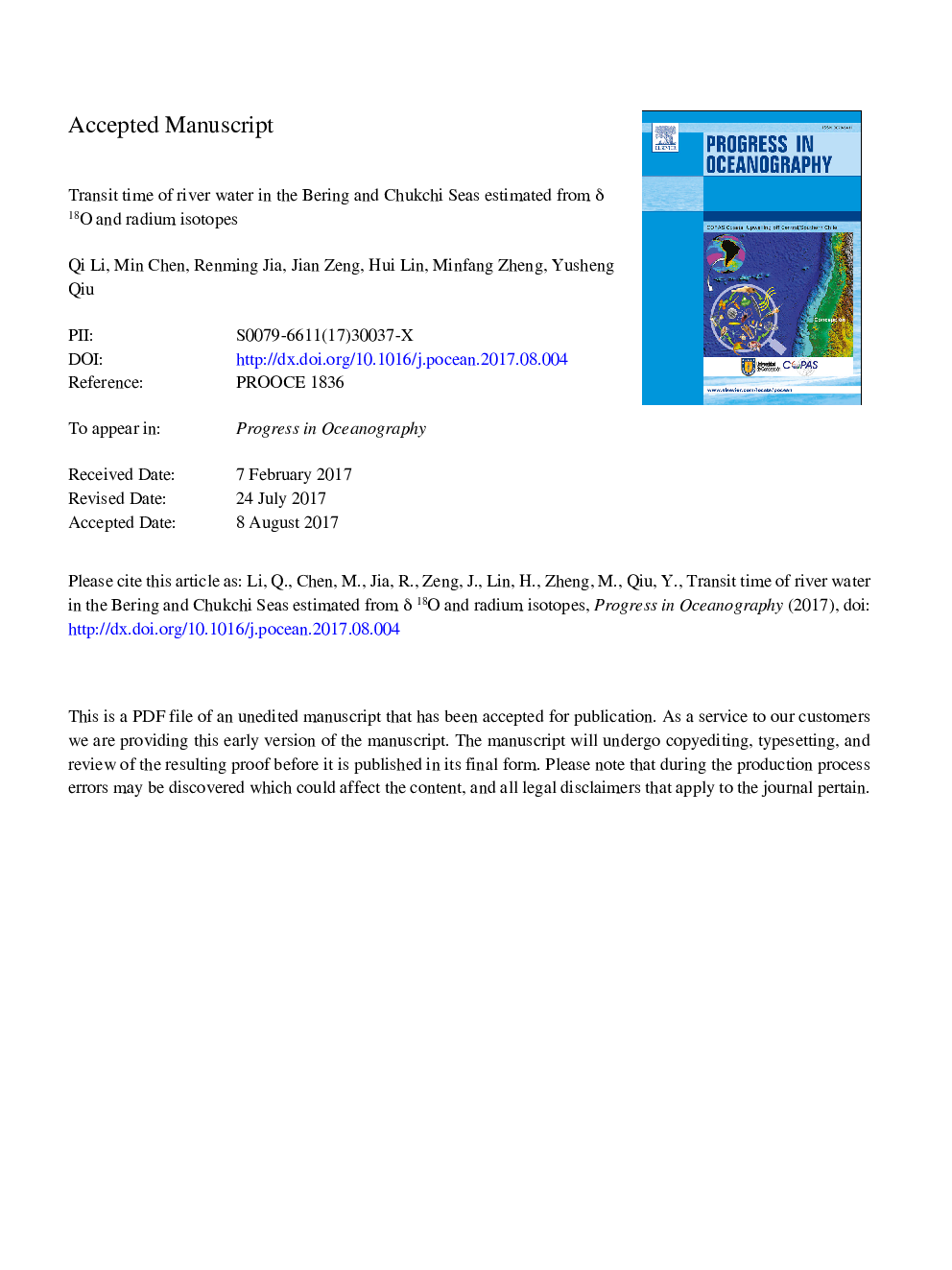| Article ID | Journal | Published Year | Pages | File Type |
|---|---|---|---|---|
| 8886746 | Progress in Oceanography | 2017 | 51 Pages |
Abstract
Seawater samples for the measurements of 226Ra, 228Ra and stable oxygen isotope (δ18O) were collected from the Bering and Chukchi Seas in the summer of 2014. The fractions of meteoric water (fMW) and sea-ice melted water (fSIM) were estimated based on the mass balance of salinity and δ18O with a three end-member mixing model. Our results showed that the average fMW increased northward from the Bering Basin to the Canada Basin while the fSIM distributed homogeneously. The lowest fMW and 228Ra/226Ra)A.R. values were found in the upper Bering Basin with little terrestrial input. The highest fMW but low 228Ra/226Ra)A.R. appeared in the northern Chukchi Sea and the Canada Basin, ascribing to the current-driven accumulation of freshwater and its long residence time. More abundant sea-ice melted water was found on the pack-ice edge, indicating the trap of earlier melted waters by the ice pack. Based upon the linear relationships between 228Ra/226Ra)A.R. and fMW in the Bering Shelf and the Chukchi Shelf, the transit time for the Pacific inflow was constrained. The transit time of river water from the Bering Shelf to the Chukchi Shelf was estimated as 0.2-4.4 years with an average of 1.6 ± 1.5 years, while that from the Chukchi Shelf to the Canada Basin was 10.2-13.2 years with an average of 11.8 ± 1.1 years. The spatial variation of the transit time was mainly affected by the current intensity. Our study highlights the importance of in-depth evaluation for the subarctic-arctic exchange.
Related Topics
Physical Sciences and Engineering
Earth and Planetary Sciences
Geology
Authors
Qi Li, Min Chen, Renming Jia, Jian Zeng, Hui Lin, Minfang Zheng, Yusheng Qiu,
